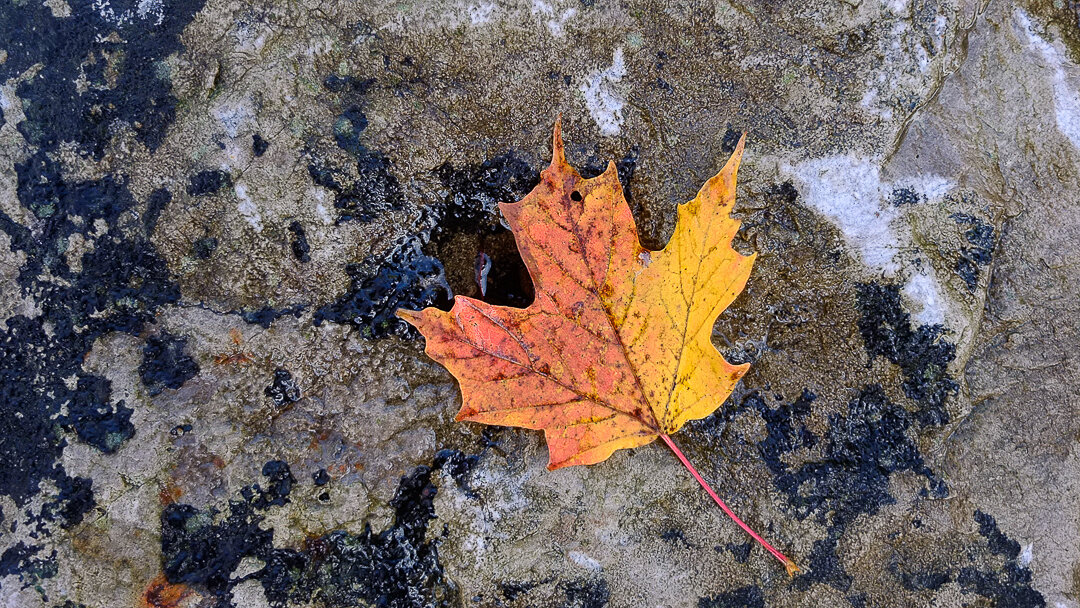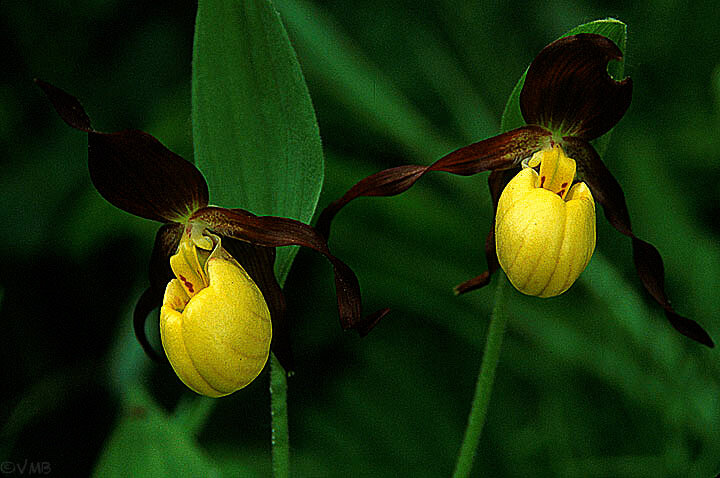Carolinian Canada is a diamond in the heart of Southern Ontario
A Woodland Gardener’s journey of discovery
I am not sure when my love of gardening took root.
Two factors, however, played a major role in both my love of gardening and how I came to appreciate a Woodland Garden over, let’s say, a more formal style of gardening.
I was in my mid-twenties and working at a large weekly newspaper in the the metro Toronto area when I got my first real taste of the joy of gardening. I remember interviewing the president of the local garden club, touring his lovely suburban garden and sharing in his excitement for the diversity of flowers, shrubs and trees that grew in his garden. It definitely was not a Woodland garden but it left a big impression.
At the same time I was getting more and more involved in nature photography and my weekends were often spent wandering the local forests looking for wildflowers and other subjects that caught my eye. As my photographic knowledge grew, so did my appreciation for the more wild areas where I lived. Photographing trilliums, dog-toothed violets, hepatica, bloodroot and the ultimate photographic subject – native lady slipper orchids – became a spring ritual. In the summer months, our focus shifted to reptiles and mammals that seemed abundant in the ponds, rivers and forests that my photographic friends and I explored.
Fall, of course, was the magical time for Ontario photographers and nature lovers when the forests were blanketed with the spectacular reds, oranges, yellows and ambers of the season.
Carolinian Canada is an important ecosystem in Ontario that needs Woodland gardener’s assistance.
What I didn’t know at the time was that the driving force behind all of this was the fact I lived in one of the most beautiful, diverse and fascinating areas in Ontario. At the time it was just the forest. I later learned that it wasn’t “just a forest,” it was a very specific type of forest that made it special.
It was the Carolinian Canada forest.
Carolinian Canada is a rare gem
It’s a stretch of forest that sweeps from Lake Erie to Toronto, just kisses Guelph and Kitchener-Waterloo before heading up to Windsor and Lake Huron. Carolinian Canada boasts a diversity unmatched anywhere else in the country. From its unusual variety of trees to its rare plants, birds, mammals, insects, amphibians and reptiles, Carolinian Canada is certainly a nature lovers dream.
The Carolinian Canada forest is characterized by the predominance of deciduous trees and actually stretches well into the United States from the Carolinas, through the Virginias, Kentucky, Tennessee, Maryland, Delaware, Pennsylvania, parts of Ohio and New York state to name just a few. In the U.S., the Carolinian zone is commonly called the “Eastern Deciduous forest.”
Yellow lady slippers
Carolinian Canada includes primarily the gardening zones 6-7 and share many of the same fauna and flora.
Trees of note include hickory, oak, walnut, and the tallest of the lot, the tulip tree. In addition, there are the understory trees featuring native dogwood (cornus florida) and the pawpaw tree with it’s large, exotic fruit that tastes very similar to a mango.
In Southern Ontario the presence of the Great Lakes and their moderating influence creates the environment necessary to boast the longest frost-free seasons and the mildest winters of any region in the province.
The outstanding features of the Carolinian Forests in Ontario is also its downfall. The climate, fertile soils and proximity to large fresh-water lakes means that Carolinian Canada is highly developed and includes some of Canada’s most populated cities, intensively farmed agricultural areas and heavy industrialized locations. All this intensive settlement, industrialization and agriculture has led to significant habitat loss and fragmentation, leaving scattered and disconnected parcels of land left to carry on the natural ecology that makes up this important ecosystem.
The Natural Treasures of Carolinian Canada, published by James Lorimer& Company Ltd., is an outstanding resource for Woodland Gardeners who want to explore the Carolinian Canada forest more fully.
I was fortunate enough to be awarded this book as part of being recognized by the Hamilton Conservation Authority Watershed Stewardship Program for the efforts my wife and I have made on our property to care for the land in such a way to maintain a healthy state for today and for future generations. More on that in a later blog.
I took the time this winter to study this almost 150-page book. The book is edited by native plant expert Lorraine Johnson with individual chapters written by experts including naturalists and scientists working at World Wildlife Fund, the Nature Conservancy of Canada, The Royal Ontario Museum as well as many universities and government natural resources ministries.
It explores in great depth the various ecosystems within Carolinian Canada from the plants to the forests, the prairie peninsula and the wetlands. In chapter two, the authors focus on the fauna everything from badgers (yes there are badgers in Norfolk county) and flying squirrels to the birds, butterflies, amphibians and reptiles.
Finally, the authors turn their attention on stewardship and how humans can reshape the land and ecosystem they have played a major role in destroying, or at least bringing to the edge of distinction. These are important chapters; ones that, as Woodland gardeners, we have the opportunity to play a vital role in reshaping.
Woodland gardeners have a say in Carolinian Canada’s future
Whether we garden in a sensitive and highly threatened ecosystem like Carolinian Canada, a prairie grassland, the rolling hills of the mid-west or a desert landscape, all gardeners, but especially Woodland gardeners have the ability to influence the future of these important places.
Wherever you live and garden, there are organizations that work to protect the natural environment. Gardeners fortunate enough to live in Southern Ontario can take advantage of the vast resources and expertise that exists at Carolinian Canada, whose mission is to “advance a collaborative conservation strategy for healthy ecosystems in Ontario’s Carolinian Life Zone.”
The organization’s diverse network works to advance a “strategic ‘Big Picture’ vision for healthy landscapes and a green future in Canada’s deep south.”
Its website (see link above) states that since 1984, Carolinian Canada Coalition has been a leading ecoregional group, bringing together thousands of people and groups who care for the unique habitat network, and to support thriving wild and human communities in harmony for generations.
For our part, my wife and I do our best to plant native trees, shrubs and flowers, but we do not get too hung up on planting only natives. We try to plant fruit- and nut-bearing trees and plants to help local fauna. We put up bird houses on the property, have both above-ground bird baths and on-ground water sources for birds, amphibians and mammals and have a large debris pile to give mammals, reptiles and insects places to harbour over the winter. We have removed all the grass from our front yard and most of it from the back yard. (What’s left in the back yard is a combination of moss, wildflowers with a little lawn mixed in.) Chemicals are rarely used and branches, leaves and garden debris never leave the site.
Not everyone has the space or are willing to keep all the leaves and garden debris on-site, but if we all make an effort to do the best we can, we can play a significant role connecting these fragmented wilder areas and provide corridors for birds, mammals and flora to prosper even in some of the most built-up areas imaginable.
This concept is what Irish garden designer, naturalist and renowned author Mary Reynolds promotes with her gardening-inspired movement We Are the Ark and her book Garden Awakening, which was reviewed on this site in the previous blog.
Woodland gardeners have been building ARKs (Acts of Restorative Kindness) for years. Now we have a reason to celebrate our efforts and work to convince others to join us in celebrating the natural forests where we live.
More links to my articles on native plants
Why picking native wildflowers is wrong
Serviceberry the perfect native tree for the garden
The Mayapple: Native plant worth exploring
Three spring native wildflowers for the garden
A western source for native plants
Native plants source in Ontario
The Eastern columbine native plant for spring
Three native understory trees for Carolinian zone gardeners
Ecological gardening and native plants
Eastern White Pine is for the birds
Native viburnums are ideal to attract birds
The Carolinian Zone in Canada and the United States
Dogwoods for the woodland wildlife garden
Bringing Nature Home by Douglas Tellamy
A little Love for the Black-Eyed Susan
Native moss in our gardens
This page contains affiliate links. If you purchase a product through one of them, I will receive at commission (at no additional cost to you)I only endorse products I use, have complete confidence in or have experience with the manufacturer.



